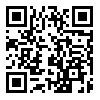BibTeX | RIS | EndNote | Medlars | ProCite | Reference Manager | RefWorks
Send citation to:
URL: http://hakim.tums.ac.ir/article-1-321-en.html
Introduction: Strategic policy making in all health care systems should be based on information relating to health utilization behaviors and the factors determining this behavior such as sociodemographic factors, economic and political systems conditions, disease pattern and the care provided in health services.
Methods: In a cross sectional study, using a multistage cluster random sampling, 2968 rural households in Guilan in which the household head or senior person was above 15 years old were interviewed using a structured questionnaire. The questionnaire consisted of demographic variables, disease history, and health utilization during the past month. Data analysis was done with SPSS 10 software and χ2 test was used.
Results: In this study, 12086 people (family size: 4.7) were interviewed. In total, 1670 persons (138/1000, CI 95%: 135-141 /1000) reported of at least one medical problem in the previous month. Thirty (1.8%) had not sought any medical care and 41 (2.5%) had used self-treatments. The main sources of medical care were private clinics (49.3%), government-run outpatient clinics (38.8%), general hospitals (6.4%), and training hospitals (0.3%). Age group, sex and education affected the utilization of health services.
Conclusion: It seems that underutilization of health centers, especially government-run centers, is multifactorial and future studies are recommended focusing on factors affecting health care utilization, causes of low frequency of attending public services and unit costs of these centers.
Hakim Research Journal 2007 10(2): 50- 55.
| Rights and permissions | |
 |
This work is licensed under a Creative Commons Attribution-NonCommercial 4.0 International License. |



